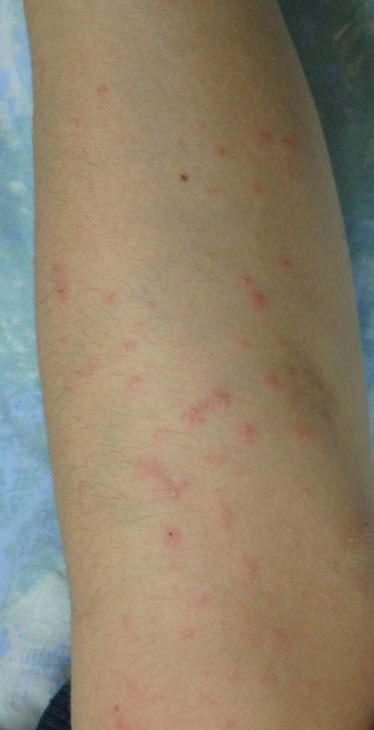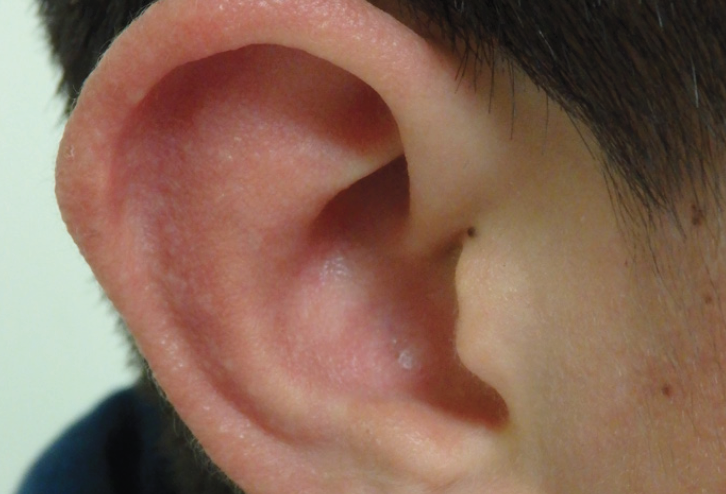Chapter 12: Skin Problems Caused by the Environment
Sun-Induced Conditions: Polymorphous light eruption (PMLE)
What is it?
Polymorphous light eruption (PMLE) is the most common form of light sensitivity. It is a delayed hypersensitivity reaction triggered by UV light and presents hours and even days after sun exposure on sun exposed areas. It is most frequently seen in teenage girls and improves with age. It is seasonal and usually occurs after exposure to the first strong sun in spring or early summer.
What does it look like?
PMLE is called polymorphous because it can have different appearances in different people. Most typically, it presents with papules and papulovesicles on sun-exposed areas such as the dorsal hands, forearms, neck and face. It is associated with stinging and itching. A variant of PMLE called “juvenile spring eruption” is most frequently seen on the ears of schoolage boys.
Can it be treated?
It is prevented by protection from exposure to UVA radiation through the use of sunscreens, long clothing, and shade seeking. Symptomatic treatment with topical corticosteroids can be helpful. It tends to improve over the course of summer due to “hardening” of the skin, so some patients choose to undergo light therapy to prevent flares. In severe cases, hydroxychloroquine might be helpful.
Hover over image for caption.



